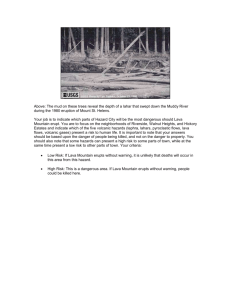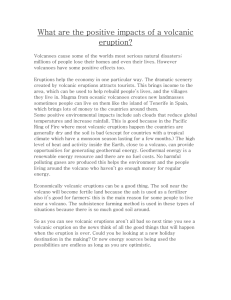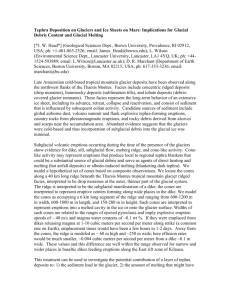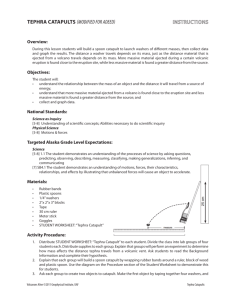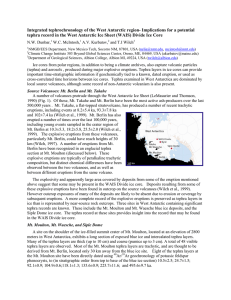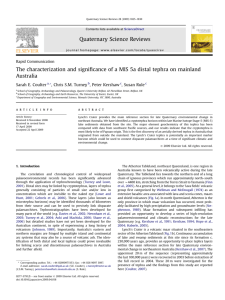Bonadonna_Costanza_Talk
advertisement
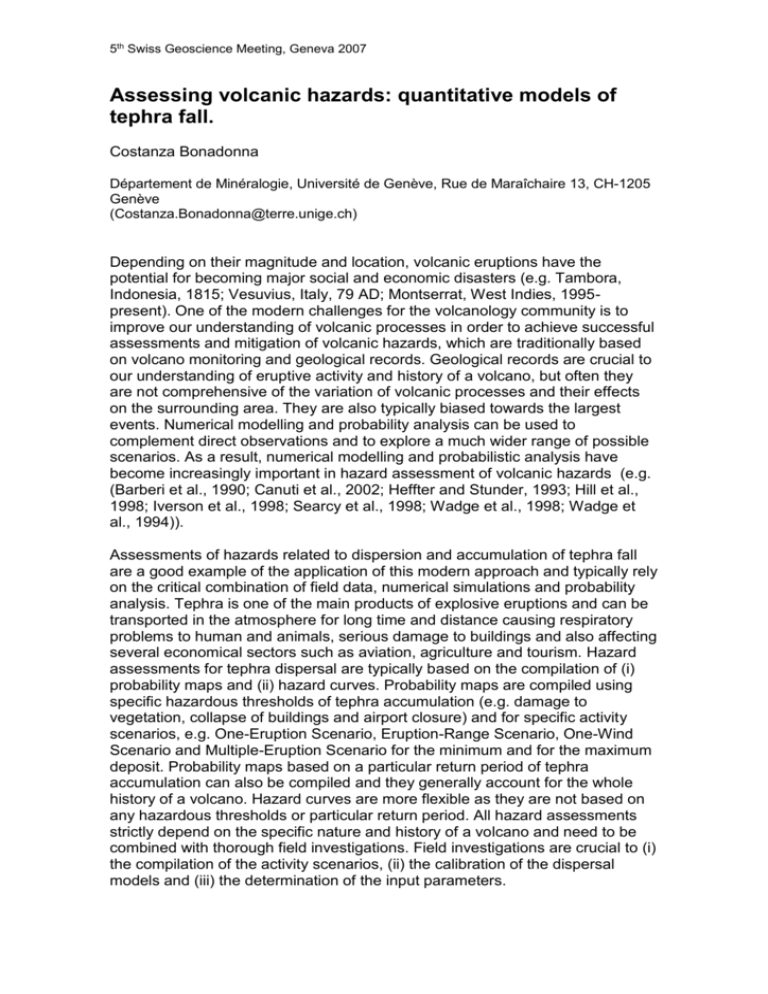
5th Swiss Geoscience Meeting, Geneva 2007 Assessing volcanic hazards: quantitative models of tephra fall. Costanza Bonadonna Département de Minéralogie, Université de Genève, Rue de Maraîchaire 13, CH-1205 Genève (Costanza.Bonadonna@terre.unige.ch) Depending on their magnitude and location, volcanic eruptions have the potential for becoming major social and economic disasters (e.g. Tambora, Indonesia, 1815; Vesuvius, Italy, 79 AD; Montserrat, West Indies, 1995present). One of the modern challenges for the volcanology community is to improve our understanding of volcanic processes in order to achieve successful assessments and mitigation of volcanic hazards, which are traditionally based on volcano monitoring and geological records. Geological records are crucial to our understanding of eruptive activity and history of a volcano, but often they are not comprehensive of the variation of volcanic processes and their effects on the surrounding area. They are also typically biased towards the largest events. Numerical modelling and probability analysis can be used to complement direct observations and to explore a much wider range of possible scenarios. As a result, numerical modelling and probabilistic analysis have become increasingly important in hazard assessment of volcanic hazards (e.g. (Barberi et al., 1990; Canuti et al., 2002; Heffter and Stunder, 1993; Hill et al., 1998; Iverson et al., 1998; Searcy et al., 1998; Wadge et al., 1998; Wadge et al., 1994)). Assessments of hazards related to dispersion and accumulation of tephra fall are a good example of the application of this modern approach and typically rely on the critical combination of field data, numerical simulations and probability analysis. Tephra is one of the main products of explosive eruptions and can be transported in the atmosphere for long time and distance causing respiratory problems to human and animals, serious damage to buildings and also affecting several economical sectors such as aviation, agriculture and tourism. Hazard assessments for tephra dispersal are typically based on the compilation of (i) probability maps and (ii) hazard curves. Probability maps are compiled using specific hazardous thresholds of tephra accumulation (e.g. damage to vegetation, collapse of buildings and airport closure) and for specific activity scenarios, e.g. One-Eruption Scenario, Eruption-Range Scenario, One-Wind Scenario and Multiple-Eruption Scenario for the minimum and for the maximum deposit. Probability maps based on a particular return period of tephra accumulation can also be compiled and they generally account for the whole history of a volcano. Hazard curves are more flexible as they are not based on any hazardous thresholds or particular return period. All hazard assessments strictly depend on the specific nature and history of a volcano and need to be combined with thorough field investigations. Field investigations are crucial to (i) the compilation of the activity scenarios, (ii) the calibration of the dispersal models and (iii) the determination of the input parameters. 5th Swiss Geoscience Meeting, Geneva 2007 REFERENCES Barberi, F., Macedonio, G., Pareschi, M.T. and Santacroce, R., 1990. Mapping the tephra fallout risk: an example from Vesuvius, Italy. Nature, 344: 142-144. Canuti, P., Casagli, N., Catani, F. and Falorni, G., 2002. Modeling of the Guagua Pichincha volcano (Ecuador) lahars. Physics and Chemistry of the Earth, 27(36): 1587-1599. Heffter, J.L. and Stunder, B.J.B., 1993. Volcanic Ash Forecast Transport and Dispersion (Vaftad) Model. Weather and Forecasting, 8(4): 533-541. Hill, B.E. et al., 1998. 1995 eruptions of Cerro Negro volcano, Nicaragua, and risk assessment for future eruptions. 110(10): 1231-1241. Iverson, R.M., Schilling, S.P. and Vallance, J.W., 1998. Objective delineation of lahar-inundation hazard zones. Geological Society of America Bulletin, 110: 972-984. Searcy, C., Dean, K. and Stringer, W., 1998. PUFF: A high-resolution volcanic ash tracking model. Journal of Volcanology and Geothermal Research, 80(1-2): 1-16. Wadge, G., Jackson, P., Bower, S.M., Woods, A.W. and Calder, E., 1998. Computer simulations of pyroclastic flows from dome collapse. Geophysical Research Letters, 25(19): 3677-3680. Wadge, G., Young, P.A.V. and McKendrick, I.J., 1994. Mapping Lava Flow Hazards Using Computer-Simulation. Journal of Geophysical Research-Solid Earth, 99(B1): 489-504.
